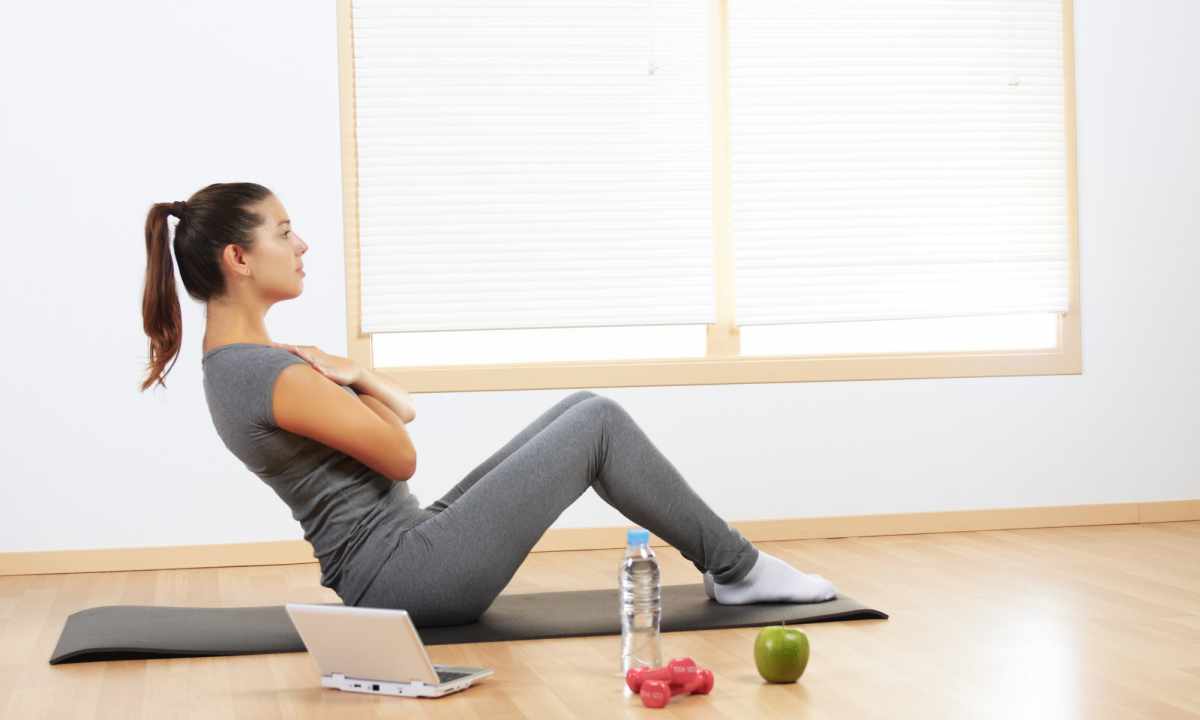Performance of physical exercises strengthens the organism, promotes weight reduction or its maintenance at optimum level. But at the wrong approach to exercises it is possible to do harm to health. Therefore it is necessary to learn to count loading, not to forget about warm-up before occupations and to smoothly finish the intensive part of exercises.
Instruction
1. During performance of exercises the pulmonary ventilation increases, oxygen level in fabrics and elasticity of walls of blood vessels increases. Regular physical trainings promote decrease in sugar in blood and cholesterol of lipoproteid of low density — LDL (known as "bad cholesterol"). At the same time quantity of lipoproteid of high density – LPVP (known as "good cholesterol") in blood raises. Work of intestines is normalized, heart becomes stronger, overall health and psychological state of the person improves.
2. It is very important to follow the general rules of performance of exercises. First, it is necessary to exclude meal shortly before the training. It is better to begin with simple, warm-up, exercises, gradually passing to difficult and more intensive. It isn't recommended to perform exercises if they cause sensations of pain. In order to avoid injuries you shouldn't be overstrained and subject the body to the long tension of muscle and ligaments in joints. Secondly, physical exercises need to be performed regularly that they brought notable benefit. According to researches of the National center of control and prevention of diseases and the American college of sports medicine, the benefit is brought by physical activity from moderated to high within not less than thirty minutes a day. At the same time usual walks on foot, rise on the ladder, work in the garden or the kitchen garden, etc. belong to such activity. It is important to remember that trainings have to repeat regularly, it is desirable every day or not less, than four times a week.
3. Performing physical exercises in the gym hall, it is quite good to remember that there are two types of loadings: aerobic exercises and anaerobic. Long moderate loadings which involve the large number of groups of muscles belong to aerobic exercises. For example – driving the bicycle, walking, swimming. Such moderate loadings are recommended for strengthening of heart and vessels. Anaerobic exercises are more dynamic and take respectively less time. They promote the heart training too, but in the presence of any diseases of this body and the wrong approach can do harm. The example of anaerobic exercises are heavy athletics and bodybuilding. The technique of carrying out exercises and their dosage depend on age of the person and the general state of health. It is possible to calculate optimum intensity of the exercise stress, based on the heart rate in the minute (pulse). Borders of top and lower "safety zone" are for this purpose calculated. The lower bound is calculated on the formula: (220 – X) x 0.5. The upper bound is equal: (220 – X) x 0.75, where X – age of the person. For example, if you are 30 years old, then the lower bound corresponds to 95 beats per minute ((220 - 30) x 0.5), and the top 142.5 beats per minute ((220 - 30) x 0.75). Being engaged in physical exercises, it is better to remain in this zone, without exceeding the top value of pulse. Also the efficiency of occupations decreases if reductions of the cardiac muscle correspond to the lower limit. In time and after physical exercises it is recommended to drink water, making up for losses of the organism in liquid. On everyone half an hour of occupations it is necessary to drink one glass of liquid. It is necessary to finish intensive loadings relaxation movements, accompanying them with the deep, filling lungs breath.

